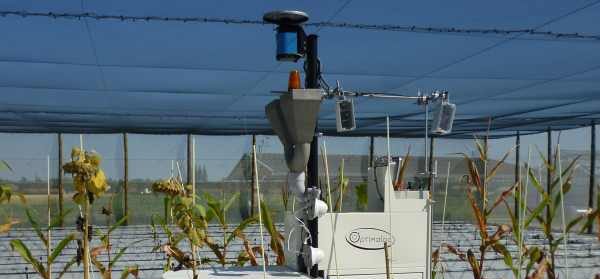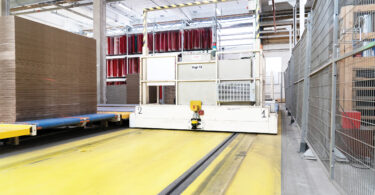As the automation and robotics trend continues to rise in popularity, it is even permeating areas you'd least expect – agriculture.
Founded in 2006, Optimalog develops PC-based specialized automation software, but is now developing an agricultural robot that can automatically cultivate crops in an agricultural research park for the French National Institute for Agricultural Research (INRA) in Toulouse, France. All of these required functions are based on integrated equipment from SICK.
The robot called HeliaPhen is an AGV used for high throughput phenotyping. It moves outdoors along the paths between the plant holders, and detects, grips, weighs, photographs, and waters the holders automatically, according to the instructions of the researchers, which they transmit directly from their workstations. The agricultural robot automatically fills its 70-liter water tank and charges its high-performance battery as necessary. It uses a weather station to monitor climatic conditions and reacts accordingly, interrupting its work if necessary.
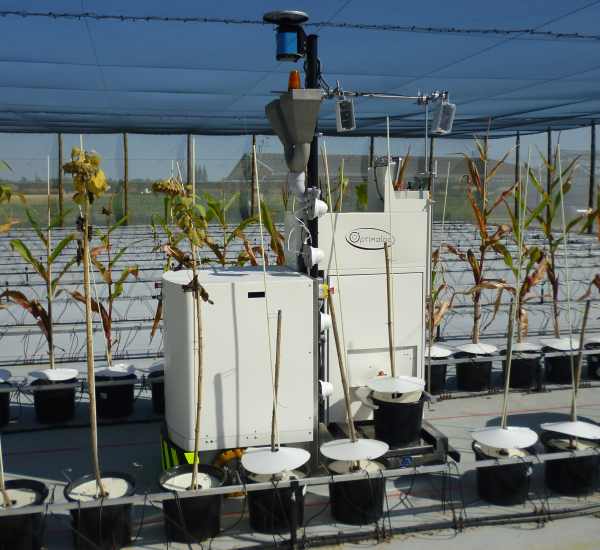
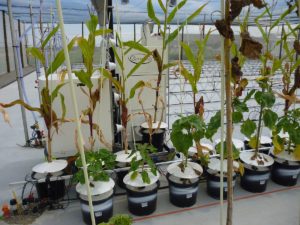
Tailored equipment from SICK
All of these functions are based on integrated equipment from SICK. First and foremost, the NAV350 navigation scanner is mounted on top of the agricultural robot. Using reflective marking points and a wide scanning range, the scanner continuously calculates its position so that the robot can orient itself. Type UM18 ultrasonic sensors (three at the front and three at the back) ensure optimal movement and are used by the robot to avoid obstacles.
Sensors connected to a navigation module issue all required instructions to the robot, so that it moves freely and reaches the plant holders to be examined. An OD Value short-range distance sensor is fitted to the HeliaPhen to detect the plant holders. The agricultural robot uses a laser beam to analyze the curvature and depth of a holder in order to locate it quickly and precisely. For this purpose, it uses a CLV barcode scanner, which reads the barcode on the holder to ensure that the robot has targeted the correct plants.
HeliaPhen then places the plant holder back in its exact theoretical position (which is not necessarily the position where it picked up the plant holder) with a measurement accuracy of 5 mm. The robot is fitted with type IN300 Direct inductive safety switches (two at the front and two at the back), which control the position of the bumpers. If the switches are triggered, the information is sent to a type UE10-2FG safety relay, which activates the emergency stop pushbutton.
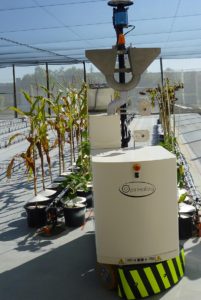
Cost reduction and maximum flexibility
Thanks to equipment from SICK, this extremely flexible and precise robot is excellently suited to its environment and carries out tasks efficiently. The arrangement of the plant holders, their size, and distances can all be changed without extensive installation work. The researchers, therefore, have maximum flexibility in conducting their plant tests. The agricultural robot can be put into operation quickly, works at high speed, and does not require costly infrastructure. OptimaLog hopes that HeliaPhen will provide advancements for the agriculture research industry.


